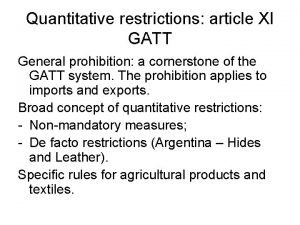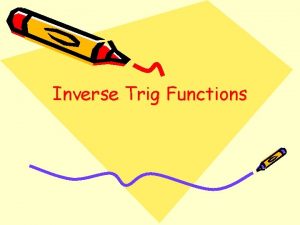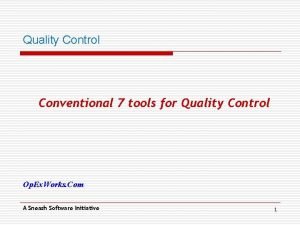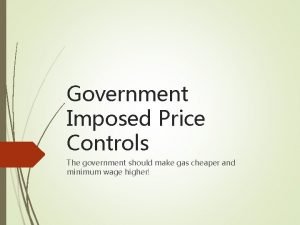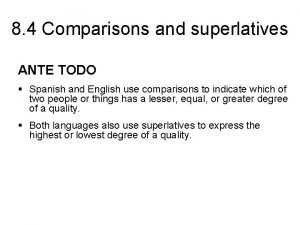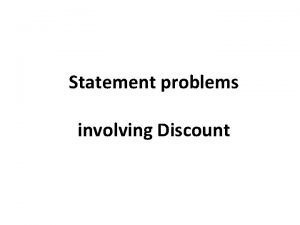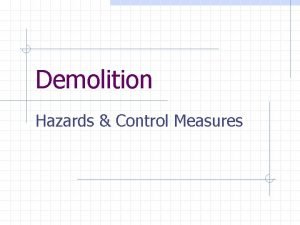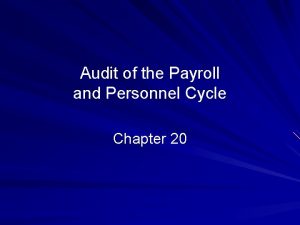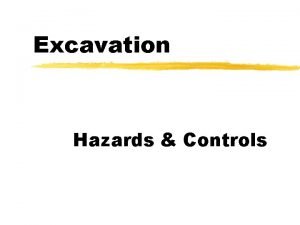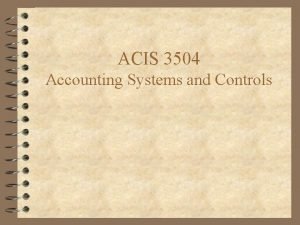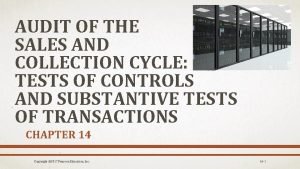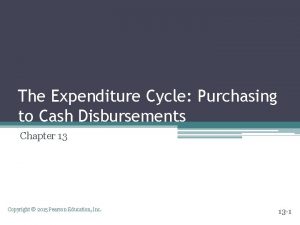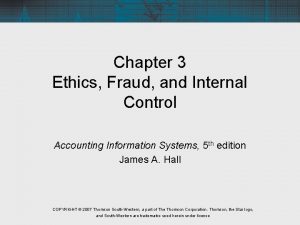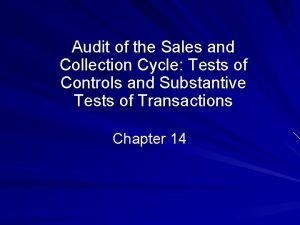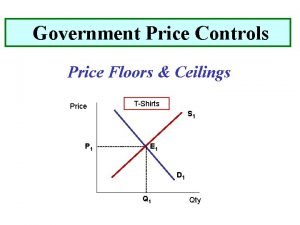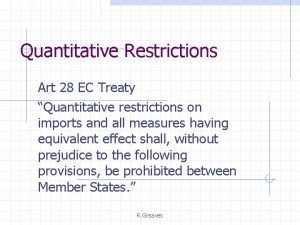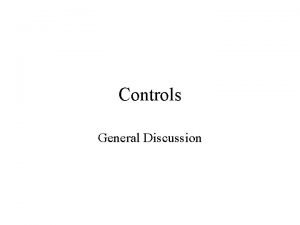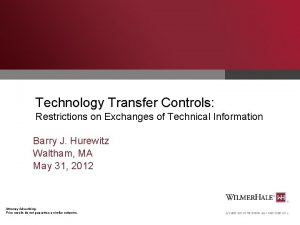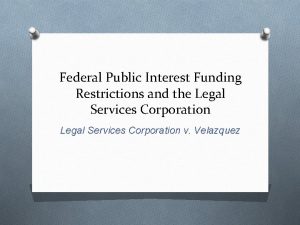Price and Quality Controls Price Controls Legal restrictions






































































- Slides: 70

Price and Quality Controls

Price Controls • Legal restrictions on how high or low a market may go • Price Ceilings is the maximum price sellers are allowed to charge for a good or service • Price Floor is the minimum price buyers are required to pay for a good or service

Price Ceilings • Typically imposed during a crisis because these events often lead to sudden price increases that hurt many people but benefit a few • Ex. WWII – aluminum and steel in demand for the war and price controls were in place to avoid a few earning large profits • Ex. Oil embargo in 1973, rent controls

The Market for Apartments in the Absence of Government Controls Monthly rent (per apartment) S $1, 400 1, 300 1, 200 1, 100 1, 000 E 900 800 700 600 0 D Monthly rent (per apartment) $1, 400 1, 300 1, 200 1, 100 1, 000 900 800 700 600 1. 6 1. 7 1. 8 1. 9 2. 0 2. 1 2. 2 2. 3 2. 4 Quantity of apartments (millions) Quantity demanded 1. 6 1. 7 1. 8 1. 9 2. 0 2. 1 2. 2 2. 3 2. 4 Quantity supplied 2. 4 2. 3 2. 2 2. 1 2. 0 1. 9 1. 8 1. 7 1. 6

The Effects of a Price Ceiling Monthly rent (per apartment) S $1, 400 1, 200 E 1, 000 A B Price ceiling 800 Housing shortage of 400, 000 apartments caused by price ceiling 600 0 1. 6 1. 8 2. 0 D 2. 2 2. 4 Quantity of apartments (millions)

Effects of Price Ceilings • Don’t always cause a shortage • If a price ceiling is set above the equilibrium price, it won’t have any effect • But sometimes price ceilings can cause inefficiency

How Price Ceilings Cause Inefficiency The effects of Rent Controls: 1. Reduces the quantity of apartments rented below the efficient level 2. Leads to misallocation of apartments among would-be renters 3. Leads to wasted time and effort as people search for apartments 4. Leads to landlords maintaining apartments in inefficiently low quality or conditions

How Price Ceilings Cause Inefficiency • Rent controls reduce the number of apartments supplied and they reduce the number of apartment rented

A Price Ceiling Causes Inefficiently Low Quantity Monthly rent (per apartment) Deadweight Loss is the loss$1, 400 in total surplus that occurs 1, 200 whenever an 1, 000 action or a policy reduces 800 the quantity transacted 600 below the efficient market 0 equilibrium quantity. S E Price ceiling D 1. 6 1. 8 Quantity supplied with rent control 2. 0 2. 2 Quantity supplied without rent control 2. 4 Quantity of apartments (millions)

Deadweight Loss s u • Key concept in economics l p r u s s e n i u • Occurs whenever an action or a policy leads r s c o l t a a a n h s t e to a reduction in the quantity transacted a h – t e e t s a m l h a e t s below the efficient market equilibrium e s n e n u o h l o t s p r e t r e o u m p s o quantity N f s e o n o r o t e o f n i is a aloss t loss s to society – a a n g • Deadweight r a t s a a reduction in theistotal surplus, a loss in surplus that accrues to no one as a gain

Price Ceilings Causing Inefficient Allocation to Consumers • 2. 2 million people wanted to rent an apartment at $800 month • Only 1. 8 million apartments are available • Of the 2. 2 million people, – some want an apartment so bad they will pay anything – Some are only willing to pay a low price and will wait for one to be available • An efficient allocation of apartments would reflect these differences, one who wants one urgently will get one and people who can wait will not get one BUT…. this does not happen

Inefficient Allocation to Consumers • Instead, in an inefficient distribution of apartments, people who aren’t in a hurry will get one and those who are, won’t. WHY? ?

Price Ceilings Causing Wasted Resources • Price ceilings typically lead to inefficiency in of wasted resources • People expend money, effort, and time to cope with the shortages caused by the price ceiling • Ex. 1979, price controls on gasoline – Lead to shortages that forced many to spend hours each week waiting in lines and missing out on wages and leisure time – opportunity cost

Price Ceilings Causing Goods to be of Low Quality • Sellers offer low-quality goods at a low price even though buyers would rather have higher quality and are willing to pay for it

Price Ceilings Causing Illegal Activities • Price Ceilings can lead to goods being bought and sold illegally • Black Markets are a market in which goods or services are bought and sold illegally – either because it is illegal to sell that at all or because the prices charged are legally prohibited by a price ceilings

Why are there Price Ceilings? 1. They do benefit some people 2. Buyers may not even know the goods they are using/buying have price controls 3. And (according to textbooks and economists) government officials do not understand supply and demand analysis

Price Floors • Government intervention to push market prices up instead of down • Minimum Wage is a legal floor on the wage rate which is the price of labor

The Market for Butter in the Absence of Government Controls Quantity of butter (millions of pounds) Price of butter (per pound) S $1. 40 1. 30 1. 20 1. 10 E 1. 00 0. 90 $1. 40 $1. 30 $1. 20 $1. 10 $1. 00 $0. 90 $0. 80 $0. 70 $0. 60 0. 80 0. 70 0. 60 0 D 6 7 8 9 10 11 12 13 14 Quantity of butter (millions of pounds) Quantity demanded 8. 0 8. 5 9. 0 9. 5 10. 0 10. 5 11. 0 11. 5 12. 0 Quantity supplied 14. 0 13. 0 12. 0 11. 0 10. 0 9. 0 8. 0 7. 0 6. 0

The Effects of a Price Floor Price of butter (per pound) Butter surplus of 3 million pounds caused by price floor $1. 40 1. 20 A S B Price floor E 1. 00 0. 80 0. 60 0 D 6 8 9 10 12 14 Quantity of butter (millions of pounds)

Effects of a Price Floor • Price floors do not always lead to an unwanted surplus • Some price floors are irrelevant • If a price floor is binding (permanent) what happens to the unwanted surplus?

Price Floors Causes Low Quantity • Price floors raise the price of a good to consumers • Price floors also reduce the quantity of that good demanded – sellers can’t sell more units of a good than buyers are willing to pay • Price floors reduces the quantity of a good bought and sold below the market equilibrium quantity and leads to a deadweight loss

A Price Floor Causes Inefficiently Low Quantity Price of butter (per pound) S $1. 40 1. 20 1. 00 Deadweight loss Price floor E 0. 80 0. 60 0 D 6 8 9 Quantity demanded with price floor 10 12 Quantity demanded without price floor 14 Quantity of butter (millions of pounds)

Price Floors Causes Inefficient Allocation of Sales Among Sellers • Price ceilings can lead to inefficient allocation • Price floors can cause inefficient allocation of sales among sellers – those who would be willing to sell the good at the lowest price are not always those who actually manage to sell it

Price Floors Cause Wasted Resources • Government purchasing of unwanted surplus of agricultural products • Surplus is destroyed or it is stored and will go bad eventually • Price floors also lead to wasted time and effort – Minimum wage jobs

Price Floors Cause Inefficiency in the Quality of Goods Produced • Sellers offer high-quality goods at a high price, even though buyers would prefer a low quality at a lower price • People want quality but only if it is worth the price

Price Floors Cause Illegal Activity • Price floors cause incentives for illegal activity • Working off the books for employers • Bribing Government Inspectors

Controlling Quantities • Quantity control (quota) is an upper limit on the quantity of some good that can be bought or sold. • Ex. Taxi Medallions

Controlling Quantities • The total amount of the good than can be transacted under the quantity control is a quota limit • Controlling quantity is done though a license, an owner is given the right to supply a good

The Market for Taxi Rides in the Absence of Government Controls Quantity of rides (millions per year) Fare (per ride) S $7. 00 6. 50 6. 00 5. 50 E 5. 00 4. 50 4. 00 3. 50 3. 00 Supply Price – a given quantity is the price at which producers will supply that quantity 0 6 7 8 9 10 11 12 $7. 00 Quantity demanded 6 Quantity supplied 14 $6. 50 7 13 $6. 00 8 12 $5. 50 9 11 $5. 00 10 10 $4. 50 11 9 $4. 00 12 8 $3. 50 13 7 $3. 00 14 6 D 13 14 Quantity of rides (millions per year) Demand Price – a given quantity is the price at which consumers will demand that quantity

Controlling Quotas • NYC limits the quantity of taxi rides to 8 million per year (assumption for analysis) • Medallions are available to selected drivers for a total of 8 million rides • Medallion holders can drive their own taxi or rent their medallions to others for a fee

Effect of a Quota on the Market for Taxi Rides Quantity of rides (millions per year) Fare (per ride) 6. 50 6. 00 5. 50 5. 00 S Deadweight loss $7. 00 A The “wedge” E 4. 50 4. 00 B 3. 50 3. 00 D Quota 0 6 7 8 9 10 11 12 13 14 Quantity of rides (millions per year) Fare (per ride) $7. 00 Quantity demanded 6 Quantity supplied 14 $6. 50 7 13 $6. 00 8 12 $5. 50 9 11 $5. 00 10 10 $4. 50 11 9 $4. 00 12 8 $3. 50 13 7 $3. 00 14 6

Controlling Quotas • How can the price received (quantity supplied) be different from the price paid (quantity demanded)? • Two transactions and thus two prices 1. The transactions in taxi rides and the price at which these occur 2. The transaction of medallions and the price at which these occur

Controlling Quotas • In every case at which the supply of goods is legally resticted there is a wedge • A wedge between the demand price of the quantity transacted and the supply price of the quantity transacted • This line represents the quota rent which is the earnings that accrue to the license-holder from ownership of the right to sell the good. It is equal to the market price of the license when the license are traded

Quantity Controls Side Effects 1. Deadweight loss because some mutually beneficial transactions don’t occur 2. Incentives for illegal activities

Price and Quality Controls Notes

Price Controls • Legal restrictions on how high or low a market may go • Price Ceilings is • Price Floor is

Price Ceilings • Typically imposed during a crisis because these events often lead to sudden price increases that hurt many people but benefit a few

The Market for Apartments in the Absence of Government Controls Monthly rent (per apartment) S $1, 400 1, 300 1, 200 1, 100 1, 000 E 900 800 700 600 0 D Monthly rent (per apartment) $1, 400 1, 300 1, 200 1, 100 1, 000 900 800 700 600 1. 6 1. 7 1. 8 1. 9 2. 0 2. 1 2. 2 2. 3 2. 4 Quantity of apartments (millions) Quantity demanded 1. 6 1. 7 1. 8 1. 9 2. 0 2. 1 2. 2 2. 3 2. 4 Quantity supplied 2. 4 2. 3 2. 2 2. 1 2. 0 1. 9 1. 8 1. 7 1. 6

The Effects of a Price Ceiling Monthly rent (per apartment) S $1, 400 1, 200 E 1, 000 A B Price ceiling 800 600 0 D 1. 6 1. 8 2. 0 2. 2 2. 4 Quantity of apartments (millions)

Effects of Price Ceilings • Don’t always cause a shortage • If a price ceiling is set above the equilibrium price, it won’t have any effect • But sometimes price ceilings can cause _________

How Price Ceilings Cause Inefficiency The effects of Rent Controls: 1. Reduces the quantity of apartments rented below the efficient level 2. Leads to misallocation of apartments among would-be renters 3. Leads to wasted time and effort as people search for apartments 4. Leads to landlords maintaining apartments in inefficiently low quality or conditions

How Price Ceilings Cause Inefficiency • Rent controls reduce the number of apartments supplied and they reduce the number of apartment rented

A Price Ceiling Causes Inefficiently Low Quantity Monthly rent (per apartment) Deadweight Loss is S $1, 400 1, 200 E 1, 000 Price ceiling 800 600 0 D 1. 6 1. 8 Quantity supplied with rent control 2. 0 2. 2 Quantity supplied without rent control 2. 4 Quantity of apartments (millions)

Deadweight Loss • Key concept in economics • Occurs whenever an action or a policy leads to a reduction in the quantity transacted below the efficient market equilibrium quantity • Deadweight loss is a loss to society –

Price Ceilings Causing Inefficient Allocation to Consumers • 2. 2 million people wanted to rent an apartment at $800 month • Only 1. 8 million apartments are available • Of the 2. 2 million people, • An efficient allocation of apartments would reflect these differences, one who wants one urgently will get one and people who can wait will not get one BUT…. this does not happen

Inefficient Allocation to Consumers • Instead, in an inefficient distribution of apartments, people who aren’t in a hurry will get one and those who are, won’t. WHY? ?

Price Ceilings Causing Wasted Resources • Price ceilings typically lead to inefficiency in of wasted resources • People expend money, effort, and time to cope with the shortages caused by the price ceiling

Price Ceilings Causing Goods to be of Low Quality

Price Ceilings Causing Illegal Activities • Price Ceilings can lead to goods being bought and sold illegally • Black Markets are

Why are there Price Ceilings? 1. They do benefit some people 2. Buyers may not even know the goods they are using/buying have price controls 3. And (according to textbooks and economists) government officials do not understand supply and demand analysis

Price Floors • Government intervention to push market prices up instead of down

The Market for Butter in the Absence of Government Controls Quantity of butter (millions of pounds) Price of butter (per pound) S $1. 40 1. 30 1. 20 1. 10 E 1. 00 0. 90 $1. 40 $1. 30 $1. 20 $1. 10 $1. 00 $0. 90 $0. 80 $0. 70 $0. 60 0. 80 0. 70 0. 60 0 D 6 7 8 9 10 11 12 13 14 Quantity of butter (millions of pounds) Quantity demanded 8. 0 8. 5 9. 0 9. 5 10. 0 10. 5 11. 0 11. 5 12. 0 Quantity supplied 14. 0 13. 0 12. 0 11. 0 10. 0 9. 0 8. 0 7. 0 6. 0

The Effects of a Price Floor Price of butter (per pound) S $1. 40 1. 20 A B Price floor E 1. 00 0. 80 0. 60 0 D 6 8 9 10 12 14 Quantity of butter (millions of pounds)

Effects of a Price Floor • Price floors do not always lead to an unwanted surplus • Some price floors are irrelevant • If a price floor is binding (permanent) what happens to the unwanted surplus?

Price Floors Causes Low Quantity • Price floors raise the price of a good to consumers • Price floors also reduce the quantity of that good demanded – sellers can’t sell more units of a good than buyers are willing to pay • Price floors reduces the quantity of a good bought and sold below the market equilibrium quantity and leads to a deadweight loss

A Price Floor Causes Inefficiently Low Quantity Price of butter (per pound) S $1. 40 1. 20 1. 00 Deadweight loss Price floor E 0. 80 0. 60 0 D 6 8 9 Quantity demanded with price floor 10 12 Quantity demanded without price floor 14 Quantity of butter (millions of pounds)

Price Floors Causes Inefficient Allocation of Sales Among Sellers • Price ceilings can lead to inefficient allocation • Price floors can cause inefficient allocation of sales among sellers

Price Floors Cause Wasted Resources • Government purchasing of unwanted surplus of agricultural products • Surplus is destroyed or it is stored and will go bad eventually • Price floors also lead to wasted time and effort

Price Floors Cause Inefficiency in the Quality of Goods Produced • Sellers offer high-quality goods at a high price, even though buyers would prefer a low quality at a lower price

Price Floors Cause Illegal Activity • Price floors cause incentives for illegal activity

Review: • The state legislature mandates a price floor for gasoline of Pf per gallon. Assess the following statements and illustrate your answer using the figure provided.

a. Proponents of the law claim it will increase the income of gas station owners. Opponents claim it will hurt gas station owners because they will lose customers. b. Proponents claim consumers will be better off because gas stations will provide better service. Opponents claim consumers will be generally worse off because they prefer to buy gas at cheaper prices. c. Proponents claim that they are helping gas station owners without hurting anyone else. Opponents claim that consumers are hurt and will end up doing things like buying gas in a nearby state or on the black market.

Controlling Quantities • Quantity control (quota) is an upper limit on the quantity of some good that can be bought or sold.

Controlling Quantities • The total amount of the good than can be transacted under the quantity control is a quota limit • Controlling quantity is done though a license, an owner is given the right to supply a good

The Market for Taxi Rides in the Absence of Government Controls Quantity of rides (millions per year) Fare (per ride) S $7. 00 6. 50 6. 00 5. 50 E 5. 00 4. 50 4. 00 3. 50 3. 00 0 D 6 7 8 9 10 11 12 13 14 Quantity of rides (millions per year) $7. 00 Quantity demanded 6 Quantity supplied 14 $6. 50 7 13 $6. 00 8 12 $5. 50 9 11 $5. 00 10 10 $4. 50 11 9 $4. 00 12 8 $3. 50 13 7 $3. 00 14 6

Controlling Quotas • NYC limits the quantity of taxi rides to 8 million per year • Medallions are available to selected drivers for a total of 8 million rides • Medallion holders can drive their own taxi or rent their medallions to others for a fee

Effect of a Quota on the Market for Taxi Rides Quantity of rides (millions per year) Fare (per ride) 6. 50 6. 00 5. 50 5. 00 S Deadweight loss $7. 00 A The “wedge” E 4. 50 4. 00 B 3. 50 3. 00 D Quota 0 6 7 8 9 10 11 12 13 14 Quantity of rides (millions per year) Fare (per ride) $7. 00 Quantity demanded 6 Quantity supplied 14 $6. 50 7 13 $6. 00 8 12 $5. 50 9 11 $5. 00 10 10 $4. 50 11 9 $4. 00 12 8 $3. 50 13 7 $3. 00 14 6

Controlling Quotas • How can the price received (quantity supplied) be different from the price paid (quantity demanded)? • Two transactions and thus two prices

Controlling Quotas • In every case at which the supply of goods is legally restricted there is a wedge • A wedge between the demand price of the quantity transacted and the supply price of the quantity transacted • This line represents the quota rent which is the earnings that accrue to the license-holder from ownership of the right to sell the good. It is equal to the market price of the license when the license are traded

Quantity Controls Side Effects
 Ano ang ibig sabihin ng price ceiling?
Ano ang ibig sabihin ng price ceiling? General controls vs application controls
General controls vs application controls He who controls the past controls the future
He who controls the past controls the future Entry type 86
Entry type 86 Article xi of gatt
Article xi of gatt How did hongwu bring stability to china
How did hongwu bring stability to china Examination permit nj restrictions
Examination permit nj restrictions Permutation with restrictions
Permutation with restrictions Buddhist dietary restrictions
Buddhist dietary restrictions Public ignores prohibition restrictions
Public ignores prohibition restrictions Inverse trig table
Inverse trig table Infectious disease quality controls
Infectious disease quality controls Quality controls for conventional techniques
Quality controls for conventional techniques Government officials who impose price controls
Government officials who impose price controls Quality control and quality assurance
Quality control and quality assurance Basic concept of quality management
Basic concept of quality management Superlative de cratered
Superlative de cratered Price discovery and price determination
Price discovery and price determination Pmp quality vs grade
Pmp quality vs grade What are quality standards in project management
What are quality standards in project management Ana model of quality assurance
Ana model of quality assurance Compliance vs quality
Compliance vs quality Quality gurus of tqm
Quality gurus of tqm Quality is free
Quality is free Old quality vs new quality
Old quality vs new quality Marked price-selling price=
Marked price-selling price= Hire purchase and installment payment system
Hire purchase and installment payment system Nerolac paints price 20 liter price
Nerolac paints price 20 liter price Media legal issues
Media legal issues Legal ethical and societal issues in media and information
Legal ethical and societal issues in media and information Alert warning symbols and controls worksheet
Alert warning symbols and controls worksheet Alert/warning symbols and controls
Alert/warning symbols and controls Differential association example
Differential association example Importance of scientific method
Importance of scientific method Physical technical and administrative controls
Physical technical and administrative controls What is negative control
What is negative control Positive control vs negative control
Positive control vs negative control Bosch rexroth electric drives and controls
Bosch rexroth electric drives and controls Demolition hazards and controls
Demolition hazards and controls Sbu m-form structure
Sbu m-form structure Audit of the payroll and personnel cycle
Audit of the payroll and personnel cycle Scientific method controls
Scientific method controls Processing integrity and availability controls
Processing integrity and availability controls Test of detail
Test of detail Excavation hazards and controls
Excavation hazards and controls Interface fire alarm systems and elevator controls
Interface fire alarm systems and elevator controls Target controlled infusion
Target controlled infusion Confidentiality and privacy controls
Confidentiality and privacy controls Accounting systems and controls
Accounting systems and controls Fraud, internal control, and cash
Fraud, internal control, and cash 3 parts of the cell theory
3 parts of the cell theory Internal controls for sales and collection cycle
Internal controls for sales and collection cycle Expenditure cycle threats and controls
Expenditure cycle threats and controls Pumps and controls
Pumps and controls This organelle controls what enters and exits the cell. *
This organelle controls what enters and exits the cell. * Iso 27001 soa excel
Iso 27001 soa excel Bound unbound and calculated controls
Bound unbound and calculated controls Cmc instrumentation and controls
Cmc instrumentation and controls Chapter 3 ethics fraud and internal control
Chapter 3 ethics fraud and internal control Sales and collection cycle internal control
Sales and collection cycle internal control Legal and ethical issues in use of ict
Legal and ethical issues in use of ict Duties towards self
Duties towards self Legal rights and moral rights
Legal rights and moral rights Legal description example
Legal description example Legal and general property valuation
Legal and general property valuation Dho chapter 5 legal and ethical responsibilities
Dho chapter 5 legal and ethical responsibilities Legal and ethical issues of e commerce
Legal and ethical issues of e commerce Legal and ethical issues in computer security
Legal and ethical issues in computer security Professional and ethical issues during internship
Professional and ethical issues during internship The legal aid board objectives
The legal aid board objectives Ethical and legal issues chapter 2
Ethical and legal issues chapter 2




